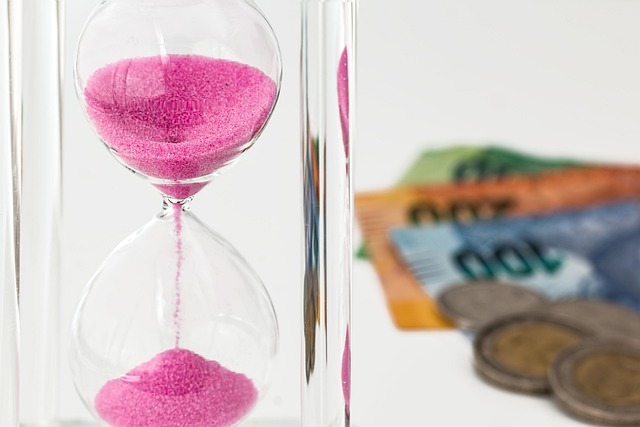Is XRP a Better Investment Than Cardano? A Practical 2025 Comparison
Author: Jameson Richman Expert
Published On: 2025-11-12
Prepared by Jameson Richman and our team of experts with over a decade of experience in cryptocurrency and digital asset analysis. Learn more about us.
Is XRP a better investment than Cardano is a common question for crypto investors weighing fast settlement networks against smart-contract platforms. This article compares XRP (XRP Ledger) and Cardano (ADA) across technology, tokenomics, adoption, regulatory risk, use cases, developer activity, and investment strategies to help you decide which aligns best with your goals. You’ll get actionable insights, scenario-based recommendations, and links to tools and exchanges so you can take the next steps confidently.

Quick summary: Headline comparison
- XRP focuses on fast, low-cost cross-border payments and has near-institutional adoption avenues, but carries higher regulatory/legal uncertainty.
- Cardano (ADA) is a research-driven, proof-of-stake smart contract platform focused on decentralization, formal verification, and long-term developer ecosystem growth.
- Which is “better” depends on your time horizon, risk tolerance, and exposure goals: XRP may appeal to traders and those chasing adoption by financial institutions, while Cardano typically suits investors looking for long-term protocol growth and staking rewards.
How I evaluate “better investment”
To answer is XRP a better investment than Cardano, compare both networks using a consistent framework:
- Use case & on-chain utility
- Tokenomics and supply dynamics
- Network performance: speed, fees, scalability
- Developer activity and ecosystem growth
- Regulatory & legal risk
- Liquidity, market structure, and institutional interest
- Reward mechanisms for holders (staking, fees)
Understanding XRP (XRP Ledger)
XRP is the native token of the XRP Ledger (XRPL), designed for fast, low-cost settlement and liquidity for cross-border payments. XRP’s primary narrative is payments and remittance efficiency—facilitating near-instant settlements with minimal fees. For background, see the official Ripple site and the XRP page on Wikipedia.
Strengths of XRP
- Very fast transaction finality (seconds) and extremely low fees compared to many blockchains.
- Native features for tokenization and payment channels are production-ready on the ledger.
- Existing partnerships and pilots with banks and payment providers have been pursued (expect continued institutional focus).
- High liquidity on major exchanges—useful for active traders.
Risks and considerations for XRP
- Regulatory and legal exposure: the Ripple v. SEC litigation has historically been a headline risk affecting price volatility and exchange listings; review the current legal status before investing (see the SEC case summary on Wikipedia).
- Centralization concerns: Ripple the company holds a significant amount of tokens and influences direction, which may be a governance and trust consideration.
- XRP’s primary use case is payments—less focus on smart contracts and DeFi compared to platforms like Cardano or Ethereum.

Understanding Cardano (ADA)
Cardano is a proof-of-stake blockchain built on peer-reviewed research and formal methods. It emphasizes secure, scalable smart contracts and a governance system designed for long-term protocol evolution. Cardano’s goals include decentralized finance, identity, and real-world adoption—particularly in regions with friction in financial infrastructure. See Cardano’s official site and the Cardano page on Wikipedia for details.
Strengths of Cardano
- Research-first approach and formal verification aim to reduce smart contract risks.
- Energy-efficient proof-of-stake (Ouroboros) with on-chain governance and upgradeability.
- Staking rewards for ADA holders provide yield and encourage long-term holding.
- Developer tooling (Plutus, Marlowe) and growing DeFi/NFT ecosystem—slower but methodical rollout.
Risks and considerations for Cardano
- History of slower rollout of promised features compared to competitors; progress is steady but measured.
- Ecosystem liquidity and DeFi TVL (total value locked) have trailed leaders like Ethereum—this affects immediate utility and speculative flows.
- Market perception shifts rapidly; research-based development attracts institutional and academic interest but doesn’t guarantee price performance.
Tokenomics and Supply: ADA vs XRP
Understanding supply dynamics is critical:
- XRP: Total supply was pre-mined at 100 billion XRP tokens with a portion held by Ripple and periodic escrow releases. This large pre-minted supply raises centralization and inflation concerns if large unlocks occur.
- Cardano (ADA): ADA has a defined maximum supply (capped) and a native staking reward model that dilutes supply gradually via rewards for validators. Its monetary policy encourages staking and network security.
For investors, capped vs pre-mined supplies affect scarcity narratives. Cardano’s capped supply and staking yield can favor long-term holders who prefer passive income; XRP’s model can appeal to traders focused on network adoption rather than yield.
Technology: Speed, Fees, and Smart Contract Capability
- Transaction speed & fees: XRP Ledger is optimized for payments—very low fees and fast finality. Cardano’s Ouroboros also offers low fees relative to Ethereum (pre-ETH scaling changes), with throughput improvements planned through Hydra and other scaling solutions.
- Smart contracts & DeFi: Cardano supports full smart contracts (Plutus) and is actively building DeFi infrastructure. XRPL has added smart contract functionality but its focus remains payments and tokenization rather than a broad DeFi ecosystem.

Developer Activity & Ecosystem Growth
Developer traction is a forward-looking indicator of value creation. Check metrics like GitHub commits, dApp deployments, developer grants, and community projects.
Cardano has historically emphasized developer funding and academic partnerships to grow its ecosystem. XRP’s ecosystem growth is more payment-focused with tokenization and on-ledger assets. When evaluating network growth, use developer and ecosystem dashboards and on-chain metrics from reputable data providers like CoinMarketCap or CoinGecko.
Regulatory and Legal Risk
Regulatory outcomes materially affect price. XRP’s history with the SEC shows how legal rulings can create volatility and exchange delistings or relistings. Cardano hasn’t experienced equivalent targeted litigation, although all crypto assets face evolving regulations.
Before investing, review authoritative sources on legal developments. For XRP-related legal history, see the public case summaries on reliable sites like Wikipedia and official court documents. For broader regulatory context, consult government sites such as the U.S. SEC.
Liquidity, Exchange Availability, and Trading Infrastructure
Both XRP and ADA are listed on most major centralized exchanges, but liquidity profiles differ. XRP historically has deep liquidity on many spot and derivatives venues. ADA is also liquid and benefits from staking availability across platforms.
If you plan to buy or trade, choose reputable exchanges with robust order books and security. For a comprehensive guide to exchanges in 2025 and how to choose one, see this crypto exchange guide: Crypto Exchange: Complete 2025 Guide for Traders.
Where to buy: popular exchanges (referral links)
- Register on Binance: Binance registration
- Register on MEXC: MEXC registration — see also MEXC fee details here: MEXC transaction fees explained.
- Register on Bitget: Bitget registration
- Register on Bybit: Bybit registration

Trading Tools and Charting
Accurate charts and alerts improve timing and risk control. If you use charting platforms, you may want to integrate them with your broker or trading app. If you use Webull and want to connect charts to TradingView-like data, this practical guide explains the options and workarounds: Does Webull connect to TradingView?.
Signals, Alerts, and Advanced Strategies
Many traders use signals to identify entry/exit points and market structure. If you’re considering signal services, understand the methodology, historical performance, and risk controls. For an overview of how crypto signals work and how they could shape trading strategies in 2025, see this primer: What are crypto signals and how will they shape 2025?.
Comparative Metrics: XRP vs Cardano
Below is an objective comparison across common investor metrics:
- Primary use case: XRP — cross-border payments and liquidity. Cardano — smart contracts, DeFi, identity, dApps.
- Consensus: XRP Ledger — unique consensus algorithm; Cardano — Ouroboros PoS.
- Speed: XRP — seconds; Cardano — seconds to minutes depending on network and layer solutions.
- Fees: XRP — very low; Cardano — low but depends on block occupancy and asset complexity.
- Staking & yield: XRP — no native staking; Cardano — staking rewards via pools.
- Supply model: XRP — pre-minted 100B (escrowed); Cardano — max supply cap with staking inflation model.
- Regulatory risk: XRP — elevated due to past litigation; Cardano — general crypto regulatory exposure but not specifically targeted historically.
- Developer & ecosystem: Cardano — focused smart contract ecosystem; XRP — payments and tokenization-first ecosystem.

Historical Performance & Volatility
Both assets have experienced significant volatility driven by macro conditions, BTC moves, adoption news, and regulatory developments. XRP’s price is often sensitive to legal updates about Ripple’s business; Cardano’s price generally reacts to development milestones, mainnet upgrades, and ecosystem growth. Past performance is not a predictor of future results—use volatility to size positions and set risk limits.
When XRP Might Be the Better Investment
Consider XRP if you align with one or more of the following investor profiles:
- You prioritize payment utility, fast settlement, and institutional adoption stories.
- You’re a short- to medium-term trader who can tolerate event-driven volatility and wants exposure to liquidity-based moves.
- You believe regulatory risks will subside and that XRP’s ties to traditional finance will accelerate adoption.
When Cardano Might Be the Better Investment
Consider Cardano if you fit one of these profiles:
- You’re a long-term investor focused on protocol growth, decentralization, and staking yields.
- You prefer exposure to smart-contract platforms with formal verification and community-driven governance.
- You want passive yield via staking and believe the Cardano ecosystem will prosper over years rather than months.

Practical Portfolio Strategies
Here are investor-friendly strategies to manage exposure between XRP and Cardano:
- Define your timeframe: Short-term traders may prefer XRP’s liquidity; long-term investors may favor ADA and staking rewards.
- DCA (Dollar-Cost Averaging): Use regular purchases to reduce timing risk for either token.
- Allocation rules: Determine a max percentage of your crypto portfolio for higher-regulation risk assets (e.g., XRP) vs. protocol-growth assets (e.g., ADA).
- Staking vs trading: If you want yield, stake ADA on reputable platforms or native wallets. For XRP, consider holding on regulated exchanges but factor in custody risks and legal uncertainty.
- Exit rules: Predefine loss limits and profit-taking levels based on volatility and position size.
How to Execute Trades and Use Tools
Steps to buy and manage positions safely:
- Choose a reputable exchange (see referral links above). Consider fee structure (MEXC fee guide linked above), liquidity, KYC requirements, and security history.
- Verify deposit methods, trading pairs, and withdrawal limits.
- Fund your account and use limit orders to control slippage.
- For charting and analysis, connect to reliable chart platforms. If you use Webull and need TradingView-level charts, see the practical connection guide: Webull & TradingView guide.
- Consider advanced features: set alerts, use trailing stops, and consider partial profit-taking rules.
- Use signal services carefully and validate them with your risk management—learn more: What are crypto signals?.
Examples: Two Hypothetical Investor Profiles
Example A — The Active Trader:
- Profile: High risk tolerance, trades on news and liquidity, holding periods days to months.
- Approach: Allocate larger portion to XRP for liquidity and faster reaction to adoption/regulatory news. Use derivatives for hedging if experienced. Monitor legal developments closely.
Example B — The Long-Term Builder:
- Profile: Moderate risk tolerance, long-term horizon (3–5+ years), seeks yield and participation in protocol growth.
- Approach: Allocate more to Cardano (ADA), stake ADA to earn rewards, follow development milestones and network growth metrics.

Key Indicators to Watch
- Legal rulings and regulatory announcements (especially affecting XRP).
- Developer activity, mainnet upgrades, and dApp launches (for Cardano).
- Exchange listings/delistings, liquidity shifts, and institutional partnerships.
- Macro liquidity and Bitcoin correlation—crypto markets often move together.
- On-chain metrics: active addresses, transaction volume, TVL in DeFi (for Cardano), and token flows from escrow (for XRP).
Resources & Further Reading
- Crypto-exchange selection and 2025 trader guide: Crypto Exchange: Complete 2025 Guide for Traders.
- MEXC transaction fee structure: MEXC Transaction Fees Explained.
- Understanding crypto signals: What are Crypto Signals?.
- Connecting trading tools and charting: Webull & TradingView practical guide.
- Watch live charts and comparative price action (example for Ethereum): Ethereum Live Price Chart 2025 Guide — useful to compare market cycles and altcoin correlation.
- XRP on Wikipedia: XRP (cryptocurrency).
- Cardano on Wikipedia: Cardano (blockchain platform).
Actionable checklist before you invest
- Define time horizon and whether you want yield (stake ADA) or liquidity (XRP).
- Check current legal/regulatory headlines for XRP and local regulations for crypto holdings.
- Set allocation and risk limits (max % of portfolio per crypto).
- Choose secure exchanges (referral links above) and enable two-factor authentication.
- Decide custody method: exchange custody vs hardware wallet. If staking ADA, review staking options and lockup implications.
- Use stop-loss and take-profit rules to manage volatility.

Final verdict — Is XRP a better investment than Cardano?
There is no single correct answer to is XRP a better investment than Cardano. The better choice depends on your objectives:
- If you want short- to medium-term exposure to payment-focused adoption and can tolerate legal/regulatory noise, XRP is a contender.
- If you prefer participation in a growing smart-contract ecosystem, long-term staking yield, and a research-driven roadmap, Cardano is likely the better fit.
Both assets can coexist in a diversified crypto portfolio. Use the evaluation framework above to align allocations with your personal risk profile and investment horizon.
Disclaimer: This article is educational and not financial advice. Crypto investing carries significant risk—do your own research and consult a financial advisor if needed before making investment decisions.